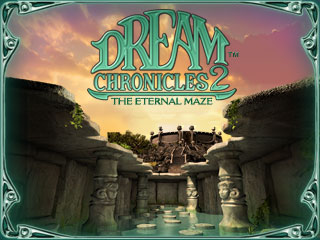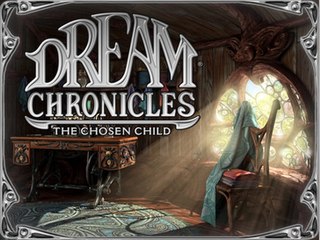
Puzzle video games make up a broad genre of video games that emphasize puzzle solving. The types of puzzles can test problem-solving skills, including logic, pattern recognition, sequence solving, spatial recognition, and word completion. Many puzzle games involve a real-time element and require quick thinking, such as Tetris (1985) and Lemmings (1991).
An escape room video game, also known as escape the room, room escape, or escape game, is a subgenre of point-and-click adventure game which requires a player to escape from imprisonment by exploiting their surroundings. The room usually consists of a locked door, objects to manipulate, and hidden clues or secret compartments. The player must use the objects to interact with other items in the room to reveal a way to escape. Escape the room games were born out of freeware browser games created in Adobe Flash, but have since become most popular as mobile games for iOS and Android. Some examples include Crimson Room, Viridian Room, MOTAS, and Droom. The popularity of these online games has led to the development of real-life escape rooms all around the world.

Azada is an adventure-puzzle casual game developed by Big Fish Studios Europe, and distributed by Big Fish Games.
Blue Tea Games is a casual computer games development studio, founded on January 24, 2003 by Steven Zhao.
Mystery Case Files is a video game series originally developed by the internal studios of Big Fish Games. Sequels were then developed by Elephant Games between 2013 and 2014 and Eipix Entertainment between 2015 and 2019. The newest installments have been developed by GrandMA Studios since 2020. The Mystery Case Files series is known for its hidden object puzzles where, in order to progress through a game, the player plays the role of a Master Detective and must find a certain number of items hidden somewhere on a painted scene.
Hidden Expedition is a series of single-player hidden object casual games developed by the internal studios of Big Fish Games for the first five installments, and by Eipix Entertainment for all subsequent installments. The three latest installments are developed by Domini Games. As of 2021, a total of twenty-one games in the series have been released. The Hidden Expedition series marks the second major hidden object game brand from Big Fish Games. The second game in the series, Hidden Expedition: Everest, would go on to be the first game Big Fish released on the iPhone.

Dream Chronicles is a 2007 adventure, hidden object, and puzzle casual game developed by KatGames and published by PlayFirst. It is the first installment in the series.

Boomzap Entertainment is a casual games developer registered in Singapore with a virtual office environment. It was formed in 2005 and has released 50 games to date that are ported on various platforms. Boomzap has developed for Microsoft Windows, Mac OS X, Nintendo DS, Wii, iOS, and Android. Its games are available on games portals such as Big Fish Games, Yahoo!, WildTangent, GameHouse, Google Play, Amazon, iTunes, Steam and others.

Dream Chronicles 2: The Eternal Maze is a 2008 adventure, hidden object, and puzzle casual game developed by KatGames and originally published by PlayFirst. It is the first sequel to 2007's award-winning game Dream Chronicles, the second installment in the Dream Chronicles series, and the second part of the first trilogy called Faye's Journey.

Dream Chronicles: The Chosen Child is a 2009 adventure and puzzle casual game developed by KatGames and originally published by PlayFirst. It is the third installment in the Dream Chronicles series, the second sequel to 2007's award-winning game Dream Chronicles and also the last part of the first trilogy called Faye's Journey.

Dream Chronicles: The Book of Air is a 2010 adventure and puzzle casual game developed by KatGames, originally published by PlayFirst. It is the fourth installment in the Dream Chronicles series, the third sequel to 2007's award-winning game Dream Chronicles, and the opening part of the second unfinished trilogy titled Lyra's Destiny.

Dream Chronicles, first released in 2007, is a series of adventure, hidden object and puzzle casual games. It was created by Miguel Angel Tartaj for KatGames and published by PlayFirst. It is also the name of the first game in the series.

Flux Family Secrets: The Rabbit Hole is a hidden object puzzle-adventure (HOPA) casual game developed by Skunk Studios, and distributed by Big Fish Games. It is the second instalment in the Flux Family Secrets series. The game is available at Skunk Studios and Big Fish Games website.

Dream Chronicles: The Book of Water is a 2011 adventure and puzzle casual game developed by KatGames and originally published by PlayFirst. It is the fifth installment in the Dream Chronicles series, the fourth sequel to 2007's Dream Chronicles, and the middle part of the second unfinished trilogy titled Lyra's Destiny.

Carmen Sandiego Adventures in Math is a series of five games released in 2011/2012 for the Wii, and is part of the Carmen Sandiego franchise. The style of the games are reminiscent of comic books. The 5-part series were the first English language console games from the Carmen Sandiego franchise since The Secret of the Stolen Drums. These "short, educational detective adventures" were only available as a download through the Nintendo Wii Shop. The games were developed by Gamelion Studios, and published by Houghton Mifflin Harcourt. They could take up to 6 players, and required 600 Wii points. Maths topics included in the games include: Symmetry, Identifying angles, Graphing coordinates on a grid, Logic puzzles, Working with fractions, Solving equations, and Tangrams. The games are designed for elementary learners across grades 3–5.

Botanica is a series of casual hidden object puzzle adventure games that is a combination of fantasy and science fiction. It was developed by Boomzap Entertainment and published exclusively by Big Fish Games. The games are available on PC and Mac platforms and with iPhone and iPad versions for the first title.

The Trace is a 2015 dark immersive murder mystery adventure game developed by British developer Relentless Software. The whodunnit game, which sees the player assume the role of a detective out to solve a series of murder cases by examining the crime scenes, has been described as "part escape-the-room and part hidden-object, with a bit of puzzle-solving mixed in". The game was available for iOS devices

Shadowmatic is a puzzle game developed and published by Armenian indie studio Triada Studio Games. Shadowmatic is a puzzle where the player rotates abstract objects in a spotlight to find recognizable silhouettes in projected shadows, relevant to the surrounding environment. The project is focused on delivering photorealistic graphics across iOS devices, combined with a challenging and relaxing gameplay. Shadowmatic was released on January 15, 2015 for iOS. The game won a 2015 Apple Design Award for the attention to detail, high-fidelity rendering, excellent execution, and perfect representation of multi-touch gameplay.

Eipix Entertainment is a Serbian video game developer based in Novi Sad. The company was founded in 2005 and develops casual games for PC, Mac, iOS and Android, as well as virtual reality games. As of December 2019, Eipix is part of Playrix.

The Clockwork Man is a hidden object adventure video game series developed by Greek development studio Total Eclipse Games. Featuring a steampunk setting, The Clockwork Man games typically require players to find a certain number of items hidden somewhere on a painted scene, as well as solve a variety of adventure and logical puzzles in order to progress through the game.
















